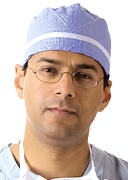- Shopping Bag ( 0 items )
-
All (138) from $1.99
-
New (16) from $7.47
-
Used (122) from $1.99






Overview
National Bestseller
The struggle to perform well is universal: each of us faces fatigue, limited resources, and imperfect abilities in whatever we do. But nowhere is this drive to do better more important than in medicine, where lives may be on the line with any decision.
Atul Gawande, the New York Times bestselling author of Complications, examines, in riveting accounts of medical failure and triumph, how success is achieved in this complex ...